Let’s back away from the detail work for just a moment. Forget the cable kickbacks and one-arm reverse-grip triceps extensions you like to use to carve detail in your arms like some sort of sculptor. Instead, let’s add some clay to the statue by building triceps mass using classic exercises and big multijoint movements.
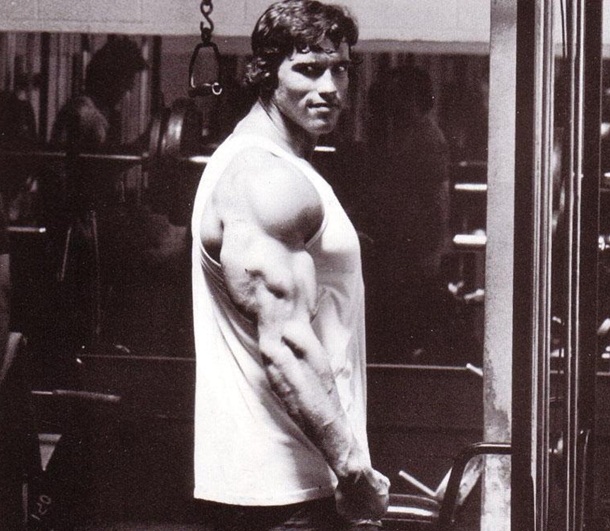
The fact is, big moves such as close-grip benches, pushdowns and dips can add shape on top of building sheer size a win-win situation on arm day.
Personal trainer and middleweight NPC bodybuilder Guillermo Escalante, CSCS, designed this triceps routine with hypertrophy in mind via a no-frills approach. He threw in a couple of novel techniques lying triceps extensions with arms parallel to the floor and a grueling bench-dip finisher to fry your tri’s before leaving the gym but also made sure the basics were front and center with a traditional pyramid-rep scheme in which you increase weight on each set.
But big moves don’t always have to mean big weight.
Feel free to load up the bar and weight stack with as much resistance as you can handle just make sure you can actually handle it. “Check your ego at the door,” Escalante says. “One common training mistake is when people load up on superheavy weights without isolating the triceps. On pushdowns, for example, a typical error is to flare the elbows out and lean forward to push more weight. On overhead movements, trainees often flare their elbows out, which is also poor form. The triceps are at a mechanical disadvantage when the long head is already stretched [as in overhead movements], so these exercises don’t require superhuman poundage to be effective.” Such breaches of technique will hamper results twofold: 1) As Escalante mentioned, they essentially de-isolate the triceps, which is no way to add size and definition to the upper arms; and 2) bad form, even when training a relatively small muscle group, can lead to an injury and result in lost gym time.
“Overhead movements are great,” says Escalante, who’s a stickler for practicing caution in the gym. “But I’d select no more than two overhead triceps exercises per workout because of the stress they place on the elbows. And warming up is critical; implement 1-2 warm-up sets with submaximal weight at the beginning of your triceps workout.”
The Workout
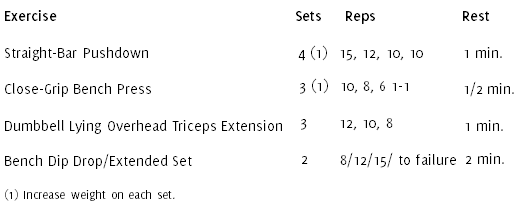
Escalante’s routine can be worked into your training split in a number of ways. Do it on a push day after (not before) hitting chest and shoulders; pair it with comparable biceps volume for a dedicated arm day; or if you’re short on time and big on giving your triceps top priority, do it on its own and call it a day.
Straight-Bar Pushdown
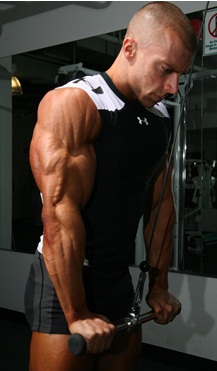 Stand facing a cable station and attach a straight bar to the high-pulley cable. Grasp the bar with both hands, and begin with your elbows in at your sides and your forearms just shy of parallel to the floor.
Stand facing a cable station and attach a straight bar to the high-pulley cable. Grasp the bar with both hands, and begin with your elbows in at your sides and your forearms just shy of parallel to the floor.
Execution:
Straighten your arms to press your hands toward the floor until your elbows are fully extended. Squeeze your triceps at the bottom of the rep.
Tip:
“Make sure your elbows stay tucked into your sides throughout the range of motion. Your wrists should also stay neutral.”
“This exercise is a great starting move to get blood flowing into all three triceps heads (medial, lateral and long), and get the muscles warmed up and prefatigued for the lifts to follow.”
Close-Grip Bench Press
Lie faceup on a flat bench with a rack and grasp the barbell with a relatively narrow grip, hands roughly 12 inches apart. Lift the bar off the rack and extend your arms above your face.
Execution:
Lower the weight to your lower chest, then press it back up in an arc so it ends up above your face when your arms are extended.
Tip:
“Don’t grip the bar with your hands too close together because it places unnecessary stress on your wrists. Grasp the bar just wide enough for your hands to clear your torso as the bar travels down to your chest.”
“The close-grip bench press is a classic compound, mass-building exercise for the tri’s that allows relatively heavy poundage to be used.”
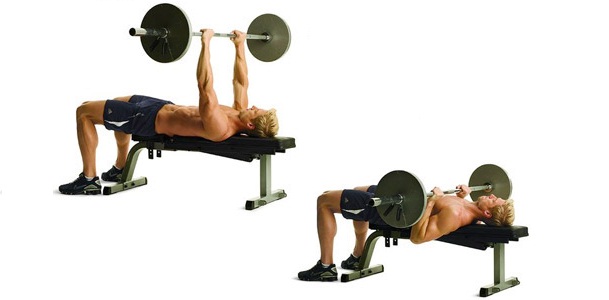
Dumbbell Lying Overhead Triceps Extension
Grasp a dumbbell in each hand and lie faceup on a flat bench. Begin with your arms overhead and extended perpendicular to the floor.
Execution:
Slowly lower the weights toward the floor by bending your elbows until they form 90-degree angles. Contract your triceps to reverse the motion and straighten your arms, squeezing the muscles hard at full extension.
Tip:
“This lift is difficult to perform with heavy weight. Go lighter, and focus on getting a full stretch at the bottom and squeezing your triceps throughout the range of motion.”
“This is a variation of the dumbbell skullcrusher. Since the upper arms are perpendicular to the floor throughout, the long head of the triceps experiences a greater stretch at the bottom of the movement.”

Bench Dip Drop/Extended Set
Place two flat benches 4-5 feet apart and parallel, and put your heels on one bench and your hands behind you on the other. Have a training partner place on your lap (lengthwise between your thighs) a dumbbell heavy enough to make you fail at about eight reps.
Execution:
Slowly bend your elbows until they form 90-degree angles. Contract your tri’s to reverse the motion, squeezing them when your arms are fully extended at the top. After eight reps, have your partner remove the dumbbell, then do 12 reps with only your bodyweight. Place your heels on the floor and do 15 more reps. To finish, move your feet closer to you and perform dips to failure. That’s one set.
Tip:
“Keep your glutes close to the bench behind you. Also, make sure the range of motion is wide enough for your elbows to bend approximately 90 degrees at the bottom of the movement.”
“The combination of a compound movement and the drop/extended sets makes this a great finishing move to ensure you target all the muscle fibers in the triceps.”
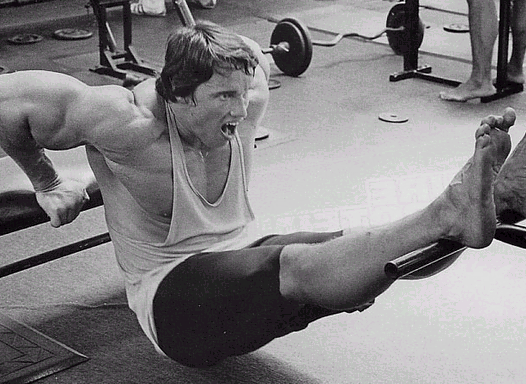
Authors: Joe Wuebben & Guillermo Escalante
References:
http://www.muscleandfitness.com/
http://www.flexonline.com/
COPYRIGHT 2011 Weider Publications
COPYRIGHT 2011 Gale Group










